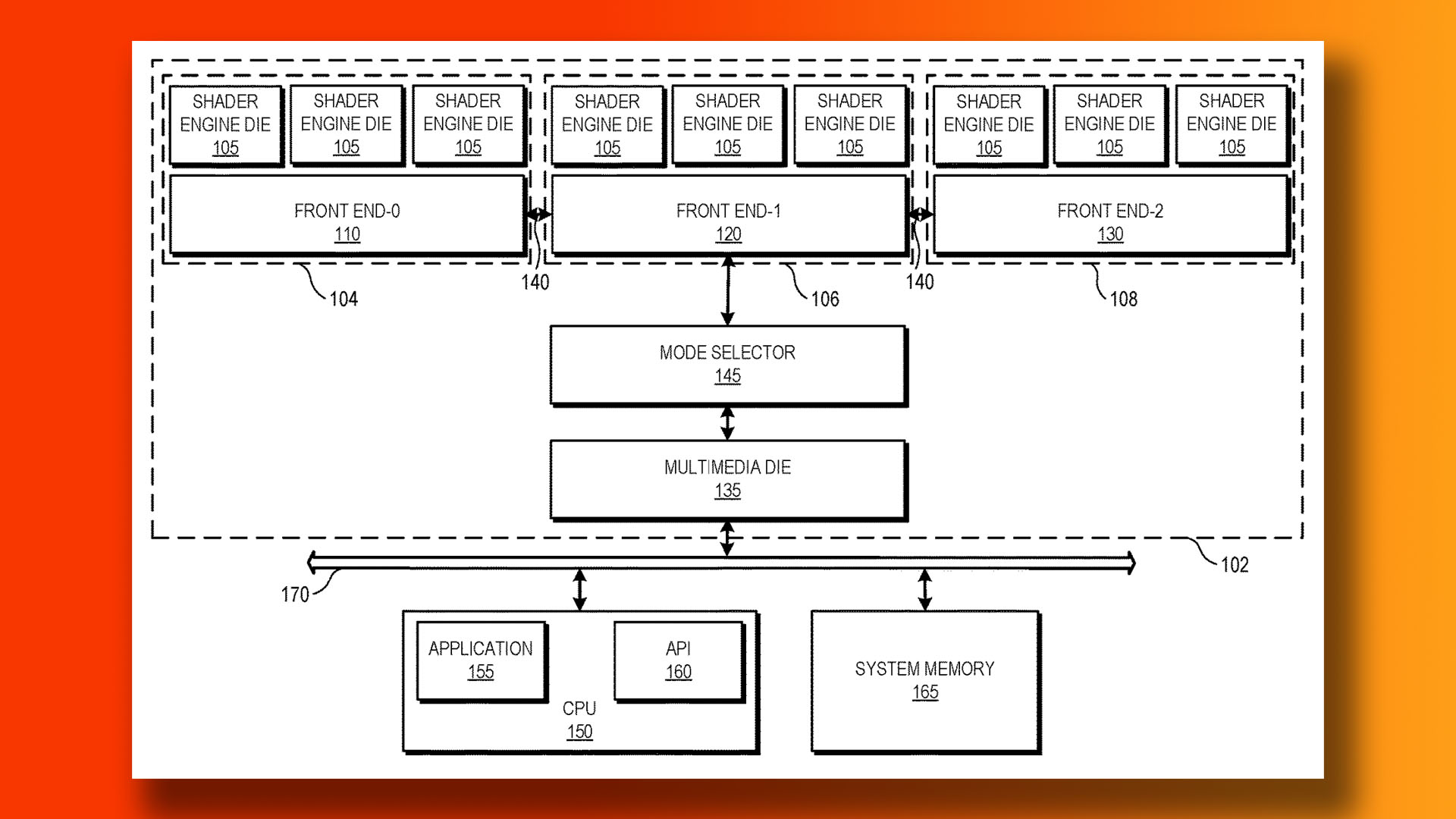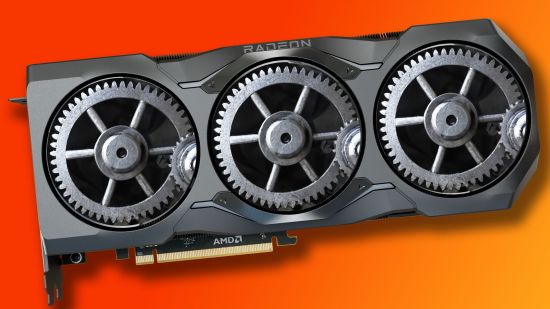AMD has patented a new GPU design that takes a radically new approach to building a graphics chip. The patent details an AMD GPU design that contains 14 chiplets, which are divided into several sections, enabling it to all act as one single GPU, or even multiple GPUs.
The best graphics cards from AMD, such as the Radeon RX 7800 XT, are already divided into several chiplets under the hood, but the GPU itself is still all in one chip – what we call a monolithic die. It’s only the cache that’s separated out into extra chiplets on these GPUs. Conversely, this AMD patent effectively details nine separate GPU dies in one chip package.
The figures in the patent show the GPU being divided into three sections, each of which contain a front end chiplet and three shader engine dies, the latter of which would contain all the stream processors used for graphics processing. Each of these clusters is linked to each other, and can communicate with two further dies – a mode selector and a multimedia die.

It all looks remarkably similar to the leaked design of the AMD Radeon Navi 4c chip, which was rumored to be coming with AMD’s forthcoming RDNA 4 gaming GPUs, such as the Radeon RX 8900 XTX later this year, but has since been reported to be cancelled.
However, this patent, which was spotted by Tom’s Hardware, shows that AMD has definitely been working on this idea, so it’s no longer just a rumor. It’s a complicated design for sure, but taking this approach would have a lot of benefits for AMD. Complex monolithic dies can be expensive to manufacture, and you get limited quantities of them on a wafer.
Separating it out into several smaller components can not only improve yields when it comes to production (a manufacturing error on one small chiplet die is much more preferable to one on a whole GPU), but also enables AMD to mix and match different manufacturing processes.
As with AMD’s Ryzen CPUs, which use different processes to make the CPU cores and the I/O hub, AMD could make its shader engine dies on the latest TSMC process, where speed and efficiency are paramount, but could then produce the multimedia die and mode selector dies on an older, cheaper, and more readily-available process.
This approach would also make it much easier for AMD to scale its products, as it wouldn’t need to manufacture multiple monolithic dies. Instead, it could produce a cheap GPU with one cluster of dies, for example, a mid-range one with two clusters, and a high-end one with all three. All the models could be based on exactly the same silicon, just with different numbers of dies under the hood.
Indeed, AMD states as much in the patent abstract, saying “a configurable number of GPU chiplets are assembled into a single GPU, such that multiple different GPUs having different numbers of GPU chiplets can be assembled using a small number of tape-outs and a multiple-die GPU can be constructed out of GPU chiplets that implement varying generations of technology.”
Of course, AMD hasn’t released any details about RDNA 4 yet, but this idea has clearly been in the works for a while. Although the patent publication date is 13 June, 2024, it was originally filed on 8 December, 2022, before even the Radeon RX 7900 XTX had been released.
We’ll have to wait and see whether AMD does indeed make a multi-chiplet gaming GPU, but the indications at the moment are that RDNA 4 will aim at the mid-range GPU market, offering RTX 4080-level performance for half the price, and leave the high end to Nvidia.
In the meantime, check out the recent AMD Zen 5 announcement to see what the company is planning for its new range of Ryzen 9000-series CPUs, which are due to be released in July 2024.
